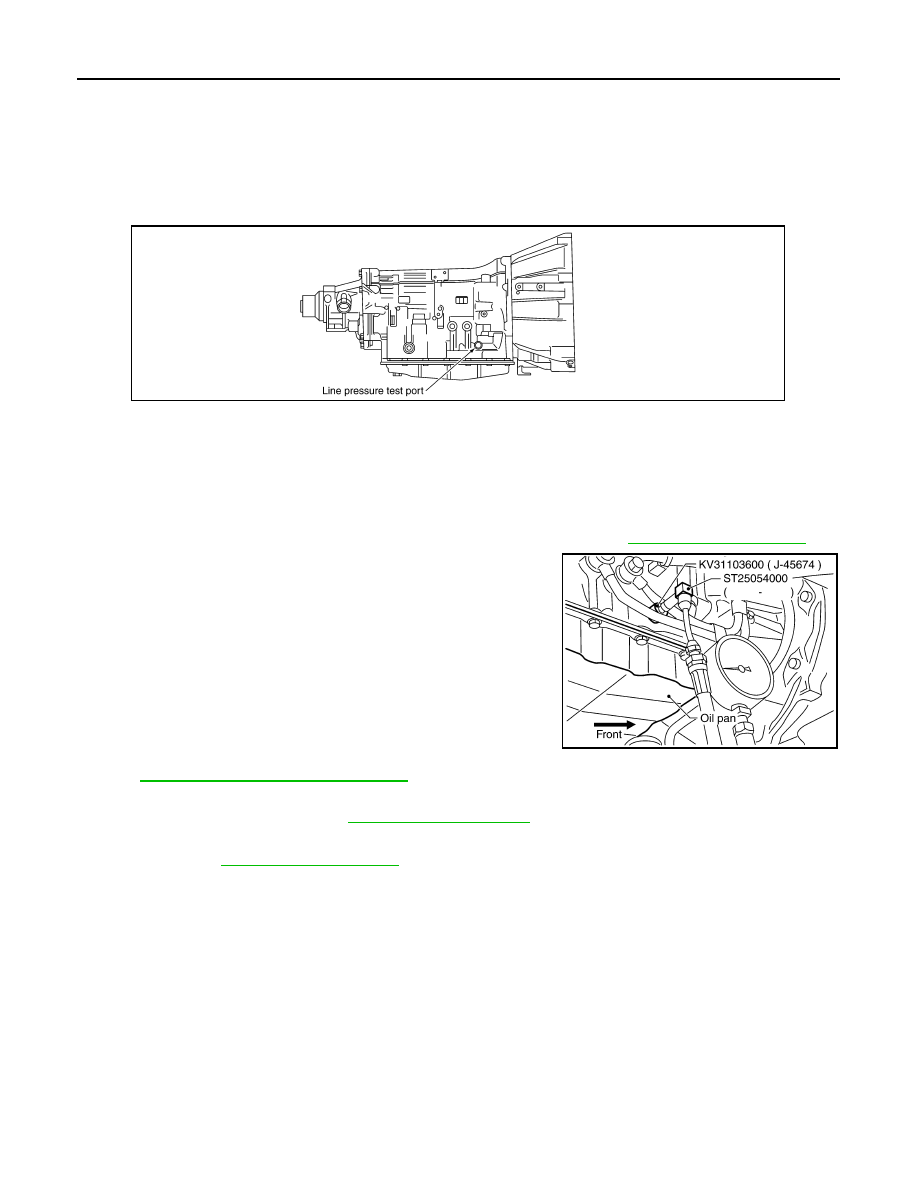Content .. 1381 1382 1383 1384 ..
Infiniti G35 (V35) Sedan. Manual - part 1383

TM-224
< ON-VEHICLE MAINTENANCE >
[5AT: RE5R05A]
LINE PRESSURE TEST
LINE PRESSURE TEST
Inspection and Judgment
INFOID:0000000000957129
INSPECTION
Line Pressure Test Port
Line Pressure Test Procedure
1.
Inspect the amount of engine oil and replenish if necessary.
2.
Drive the car for about 10 minutes to warm it up so that the ATF reaches in range of 50 to 80
°
C (122 to
176
°
F), then inspect the amount of ATF and replenish if necessary.
NOTE:
The A/T fluid temperature rises in range of 50 to 80
°
C (122 to 176
°
F) during 10 minutes of driving.
3.
Remove the front propeller shaft from vehicle (with AWD models). Refer to
4.
After warming up remove the oil pressure detection plug and
install the oil pressure gauge [SST: ST2505S001(J-34301-C)].
CAUTION:
When using the oil pressure gauge, be sure to use the O-
ring attached to the oil pressure detection plug.
5.
Securely engage the parking brake so that the tires do not turn.
6.
Start the engine, then measure the line pressure at both idle and
the stall speed.
CAUTION:
• Keep the brake pedal pressed all the way down during
measurement.
• When measuring the line pressure at the stall speed, refer
to
TM-223, "Inspection and Judgment"
7.
After the measurements are complete, install the oil pressure detection plug and tighten to the specified
torque. Refer to
CAUTION:
• Do not reuse O-ring.
• Apply ATF to O-ring.
JUDGMENT OF LINE PRESSURE TEST
SCIA2187E
LINE PRESSURE
: Refer to
SCIA5309E